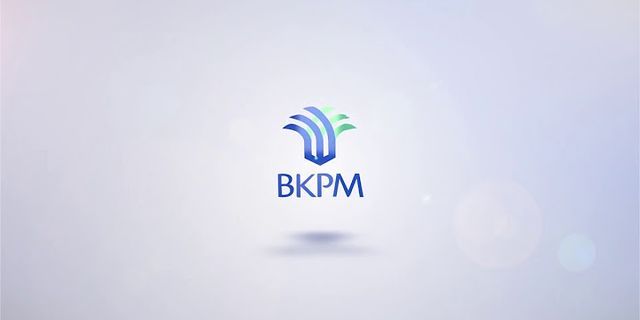Individuals earning Rs 8-9 lakh annually would not have to pay any income tax if they make proper investments in tax saving instruments like provident fund, life insurance, pension scheme and home loan, Revenue Secretary Ajay Bhushan Pandey said Saturday. Finance Minister Piyush Goyal in the Interim Budget for 2019-20 proposed to give full tax rebate to individuals having taxable annual income up to Rs 5 lakh with a view to benefitting around 3 crore middle class taxpayers at an estimated revenue sacrifice of Rs 18,500 crore. "We have given complete rebate of Income Tax so that people having taxable income of Rs 5 lakh do not have to pay any tax. Now people having even higher gross income if they make investment in 80C or if they pay interest on education or home loan, or if they invest in pension scheme, mediclaim, critical illness then people having much higher income in the range of Rs 8-9 lakh also can get their taxable income reduced to below Rs 5 lakh and get advantage of rebate and not pay any tax," Pandey told PTI in an interview. Budget 2019: Piyush Goyal delivers part Budget speech and part election pitch
The 2019-20 interim budget has proposed a major tax reform, by increasing the limit for tax exemption to Rs. 5 lakh. However, the other tax slabs remain unchanged. People who earn more than Rs. 5 lakh per annum will still need to pay tax as per their slab. If your income is between Rs. 5 lakh to Rs. 10 lakh, you will need to pay 20% of your taxable income to the government. Must Read : 4 Top Factors That Led to the Growth of NBFCs in India  If you are a salaried individual who falls into the 20% category, there are still ways in which you can reduce your taxable income enough that you may not need to pay any tax at all. Specifically, if you earn up to Rs. 7.75 lakh per annum, you can follow the following investment guide to ensure that you pay zero tax on your income. The aim is to reduce your total taxable income to Rs. 5 lakh.
Step 1: Step 2: Additional Read : What is Loan Account Number (LAN) Step 3: Step 4: Additional Read : What is Compound Interest & Simple Interest: How to Calculate It Step 5: As income up to Rs. 5 lakh is tax exempt, your total tax dues will be – zero. Here’s a table illustrating how this works:
 DISCLAIMER:
If you're seeing this message, it means we're having trouble loading external resources on our website. If you're behind a web filter, please make sure that the domains *.kastatic.org and *.kasandbox.org are unblocked. Less than 3 per cent of Indian adults paid income tax for the financial year 2011-12, new data released by the Income Tax department on Friday show.Have you ever wondered where you stand in the Indian economy? Since there is no satisfactory official data on income levels of Indian households, we don’t have a clear answer. But now that the government has released income tax statistics after 15 long years, we have got an inch closer to answering this question – at least for the top earning class. Less than 3 per cent of Indian adults paid income tax for the financial year 2011-12, new data released by the Income Tax department on Friday show. If you pay income tax, check our interactive to see how many Indians earn more than you do. Surprised? Previous data throws some insights, offering a broader picture of how much people earn and spend across the country. Net income of an individual is the sum total of various income sources – salary, business, property, interest on loans etc. The National Sample Survey Organisation (NSSO), which conducts regular surveys to assist the government in socio-economic planning and policy-making, doesn’t ask direct questions on income because it believes that it is difficult for survey respondents to accurately estimate their income. However, NSSO does ask the monthly per capita expenditure, which is often used to measure prosperity as a surrogate to income. According to the latest data available for 2011-12, if your monthly spend is around Rs. 3,000 in rural areas and Rs. 6,300 in urban areas, you belong to the top 5 per cent. That translates to an annual spend of Rs. 36,000 and Rs. 75,000 for rural and urban areas respectively. But India Human Development Survey of 2011-12 (IHDS-II) conducted by the National Council for Applied Economic Research, did ask a nationally representative sample about their incomes. According to IHDS-II, if your annual household income is greater than Rs. 1.6 lakh, you belong to the richest 20 per cent of the country.
Note: Quintile represents 20% of a given population Data Source: India Human Development Survey, 2011-12 Specifically talking about rural India, which accounts for nearly 70 per cent of the country’s population, the Socio-Economic and Caste Census conducted in 2011 (SECC) found that in around 75 per cent of the rural households, the main earning family member makes less than Rs 5,000 per month or Rs 60,000 annually. Further, in only 8 per cent of rural households does the main earning member make more than Rs. 10,000 per month or Rs. 1.2 lakh annually. The two surveys and SECC data establish that India is not a rich country. And hence, the fact that a small fraction of Indians pay income tax is not very surprising. However, experts point out that this also indicates that taxes are being evaded and that there might be a difference in ‘actual income’ of an individual compared to ‘declared income’. Also, note that only data for ‘returned income’ – total income minus possible tax deductions– is available. So while this data comes with these caveats, it is the only source which gives us an insight on how wealth is distributed among the richest Indians. |

Pos Terkait
Periklanan
BERITA TERKINI
Toplist Popular
#1
#2
#4
#5
#6
#7
Top 8 apa itu benedict dan biuret? 2022
1 years ago#8
#9
#10
Top 6 apa itu self pick up grabfood? 2022
2 years agoPeriklanan
Terpopuler
Periklanan
Tentang Kami
Dukungan

Copyright © 2024 toptenid.com Inc.


















